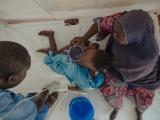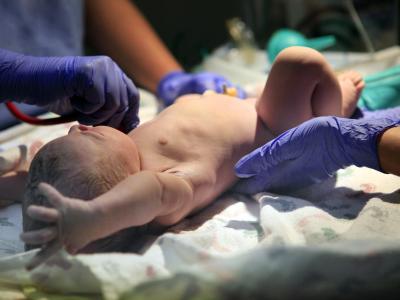Mar 4, 2002 (CIDRAP News) – An outbreak of eosinophilic meningitis among a group of young Americans who had dined together at a Jamaican restaurant marked the first known outbreak of infection with the rat lungworm in the Western Hemisphere, according to a report in the Feb 28 issue of the New England Journal of Medicine.
The infection with Angiostrongylus cantonensis apparently resulted from eating a contaminated Caesar salad, according to the report by Trevor J. Slom, MD, of Northwestern University Medical School in Chicago and colleagues from Northwestern and several other institutions.
"Regions where A cantonensis infection is endemic clearly extend beyond Southeast Asia and the Pacific Basin," the report states. "Physicians and public health officials should be alert for this condition throughout the Caribbean and nearby regions, since A cantonensis has been found in rats in Cuba, Puerto Rico, the Bahamas, the Dominican Republic, and Jamaica, as well as in New Orleans." A cantonensis is the most common infectious cause of eosinophilic meningitis in humans, who can become infected by eating larvae in raw or undercooked snails, freshwater prawns, frogs, fish, planarians, or fresh produce, the report says.
The outbreak surfaced in April 2000, when two medical students in Chicago were hospitalized after 10 days of worsening headache, neck pain, and paresthesias. They had been in a group of 23 travelers who had visited Jamaica for a week earlier in the month. Seven more members of the group were hospitalized with similar symptoms within a week and a half after the first two.
Twelve of the 23 travelers met the clinical case definition for eosinophilic meningitis: acute onset of headache within 35 days after returning from Jamaica, accompanied by any of the following: visual disturbances, photophobia, nuchal rigidity, neck pain, hyperesthesias, or paraesthesias. Eosinophilic meningitis was eventually confirmed by examination of cerebrospinal fluid in 8 of the 9 hospitalized patients. Serologic analysis revealed antibodies against the 31-kD antigen of A cantonensis in 11 of the 12 patients but not in any of the 11 travelers who remained healthy. There was no evidence of infection with other parasites, such as Trichinella spiralis, in the patients.
Interviews with the 23 travelers led the authors to link the illness with a restaurant meal that 16 members of the group had eaten the night before returning from Jamaica. "Only one restaurant meal was eaten by all 12 patients," the report states. "Twelve of the 16 travelers who ate this meal became ill, whereas none of the 7 who did not eat this meal become ill (P=.001)." Of 13 travelers who ate Caesar salad during the meal, 12 became ill, while the three who didn't eat the salad stayed healthy (P=.007). None of the group reported eating snails or other typical carriers of the parasite. The salad contained romaine lettuce imported from the United States, along with canned anchovies, but no mollusks or other seafood. The authors concluded that the lettuce was the most likely source of contamination, but they could not exclude the possibility of some other common exposure.
Symptoms eventually cleared up in all 12 patients, but eight had headaches for at least 4 weeks, and two of these had headaches for 6 to 8 weeks after hospital discharge, the article says. Five patients enjoyed relief of symptoms with nonsteroidal anti-inflammatory drugs alone, but 7 required opioid agents. The three patients with the worst symptoms underwent repeated lumbar punctures and corticosteroid treatment; these measures were effective in 2 of the 3. Anthelmintic agents were not used because of their reported lack of efficacy in adults and a theoretical possibility of making the neurologic symptoms worse. The report notes that A cantonensis larvae usually die shortly after reaching the meninges.
The authors say that a few isolated cases of A cantonensis infection have been reported in the Western Hemisphere, but no outbreaks had been seen previously outside Southeast Asia and the Pacific Basin. "Headache, elevated intracranial pressure, and a nonneutrophilic pleocytosis, with or without eosinophilia, should suggest the possibility of A cantonensis infection," the report advises. "The association of meningitis with paresthesias or hyperesthesias should also suggest this diagnosis, because these symptoms are unusual in other forms of meningitis."
The standard precautions for preventing diarrheal illness, including shunning unwashed fresh produce and raw or undercooked snails and other mollusks, should protect people from A cantonensis infection, the report concludes.
Slom TJ, Cortese MM, Gerber SI, et al. An outbreak of eosinophilic meningitis caused by Angiostrongylus cantonensis in travelers returning from the Caribbean. N Engl J Med 2002;346(9):668-75




















